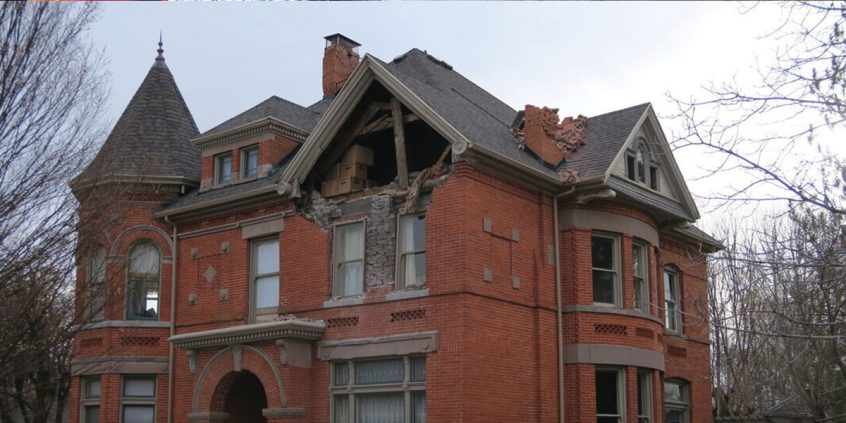SALT LAKE CITY – Utah has a rich heritage of brick architecture. From Fort Douglas and the Isaac Chase Mill to Provo Tabernacle and Brigham Young’s Winter Home, many of the state’s oldest and most historic structures were made with bricks.
However, many brick buildings are vulnerable to earthquakes.
Unreinforced Masonry (URM) Structures built prior to 1975 often feature brick walls with little or no steel reinforcement bars. During an earthquake, non-retrofitted URM buildings often collapse both inwards and outwards, crumbling on top of people, cars or nearby structures.
There are more than 90,000 vulnerable URM buildings along Utah’s Wasatch Front. They can sustain major damage even during relatively small earthquakes and probably won’t survive a large quake.
Yet there are many common retrofit measures that home and business owners can undertake to make their structures safer. These retrofits help keep buildings intact, allowing people to exit safely and reducing the loss of life in a major earthquake.
If you live or do business in an older brick building — and it hasn’t already been retrofitted for earthquakes — contact a licensed contractor or repair professional to inspect your structure and determine what needs to be done to make it quake safe.
For those with heritage properties, retrofitting for earthquakes has a very low likelihood of affecting the historical elements of a home or business. Features like anchors or bracing are not visible from the outside.
Salt Lake City has launched a homeowner rebate program to address URM earthquake issues called “Fix the Bricks” funded by mitigation grants from FEMA and the city.
Fix the Bricks emphasizes two retrofit techniques that enhance life safety: 1) strengthening the roof/wall connection, thereby enhancing the ability of the walls and roof to support each other against collapse; and 2) bracing chimneys to prevent collapse.
FEMA and the state of Utah have several publications explaining rebuilding and retrofitting options and other earthquake preparedness actions. To learn about these and for other tips or to ask questions about mitigation, email FEMA-R8-HMhelp@fema.dhs.gov.
Utah residents impacted by the March 18 quake and aftershocks who have not registered with FEMA can still apply for assistance at www.DisasterAssistance.gov or by calling the FEMA Helpline at 800-621-3362 (FEMA) or (TTY) 800-462-7585. Help is available in most languages.
Deadline to register for assistance is September 8
If you require a reasonable accommodation or an alternative format of available information such as American Sign Language format, or audio format, please submit your request to: Region8AccommodationRequest@fema.dhs.gov.
For more information on Utah’s recovery from the Magna Quake, visit, www.fema.gov/disaster/4548, or https://earthquakes.utah.gov/magna-quake/.
###
FEMA’s mission is helping people before, during, and after disasters.

